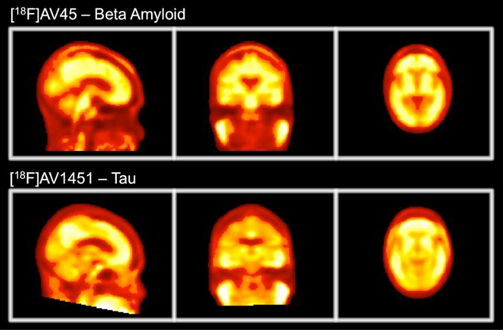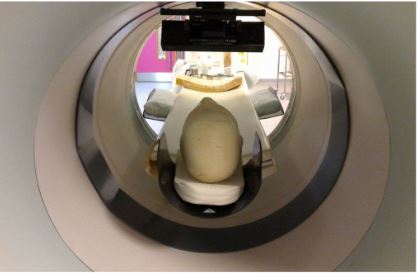Can Kinect technology improve brain imaging?
Blurry images: they’re a nuisance when they wreck your holiday photographs or ruin that video of your sister’s wedding. But they’re much more than a nuisance in the world of medical imaging. Blurry medical images can result in costly repeat scans or, worse yet, can lead to misdiagnoses.
As anyone who’s ever been x-rayed or scanned knows, it’s hard to hold still while a medical image is made. It’s harder yet for patients who suffer from dementia, many of whom cannot control their head movements during PET (positron emission tomography) scans of their brain. Such scans can be invaluable in determining brain function and the effectiveness of treatments, especially since the recent development of PET tracers that can image the characteristic protein plaques and inflammatory processes found in the brains of Alzheimer’s patients.

PET brain scans reveal beta amyloid and tau protein structures characteristic of Alzheimer’s disease,
but head movements can render the scans unusable. Researchers hope to use Kinect for Windows
and computer vision software to remedy this problem.
Now Imanova, a UK-based international imaging center, is looking to solve the problem of blurred PET scans—and the latest Kinect for Windows technology is a big part of their proposed solution. Britain’s Medical Research Council recently awarded Imanova and Imperial College London a grant to integrate the Kinect for Windows v2 sensor into PET scanners, in order to detect patient movement in real time during scans.

The Kinect sensor will be mounted above the patient's head in the PET scanner.
The latest Kinect sensor’s state-of-the-art 3D camera does not require special lighting or direct contact with the patient, but it can effectively capture even slight movements, the effects of which can then be removed by applying computer vision algorithms during the reconstruction of the diagnostic image. Coupled with the latest high-resolution medical scanners, the Kinect-enabled system should produce images uncontaminated by movement. Medical researchers will compile clinical data to demonstrate the accuracy and usability of the technology in a real-world imaging environment.
This project demonstrates how Kinect technology can serve as a low-cost but highly sophisticated tool for medical use. Not only does the Imanova system promise significant benefit to dementia patients, it also has the potential to improve the understanding of a range of neurological conditions.
The Kinect for Windows Team
Key links